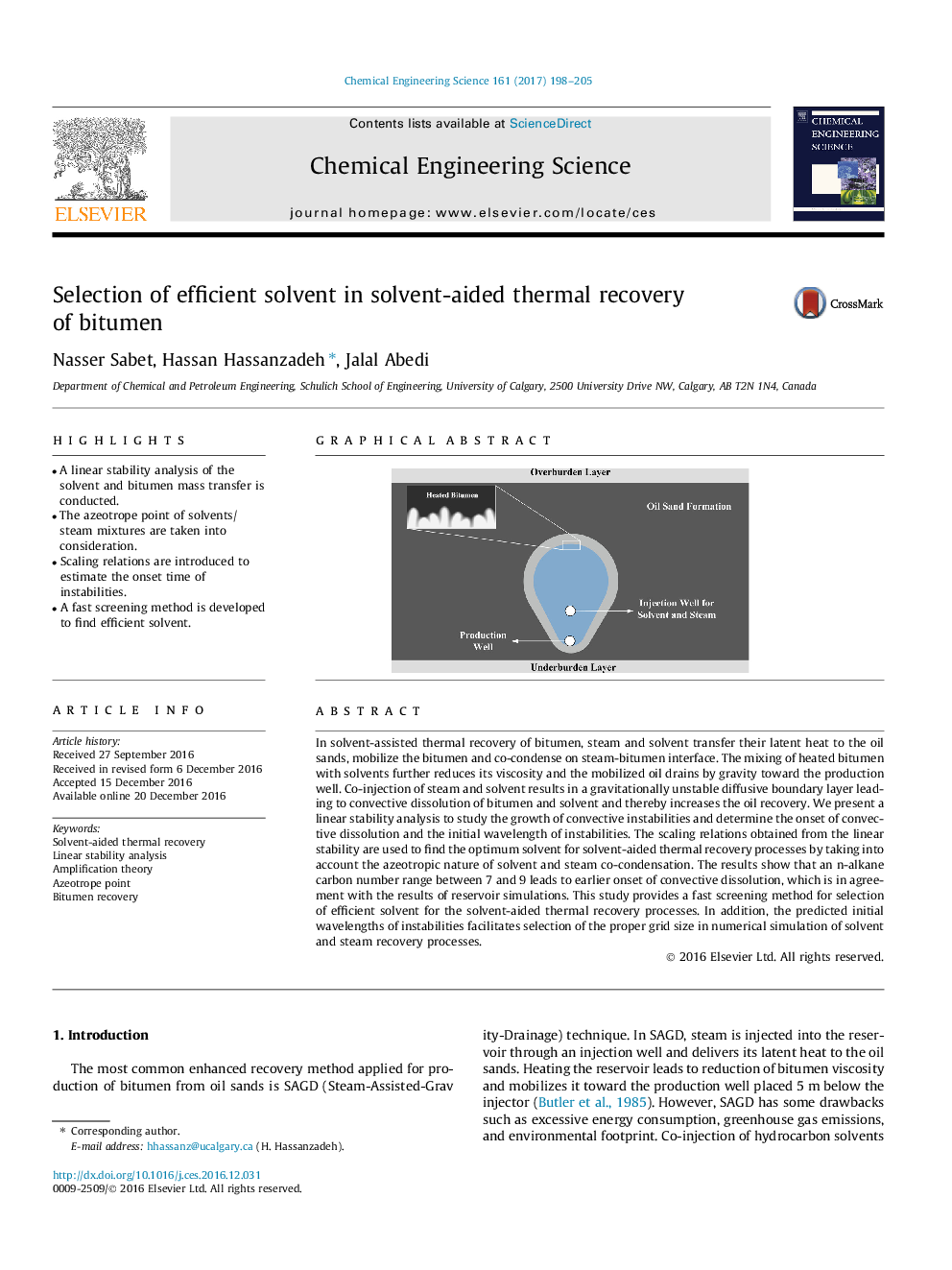| Article ID | Journal | Published Year | Pages | File Type |
|---|---|---|---|---|
| 6467545 | Chemical Engineering Science | 2017 | 8 Pages |
â¢A linear stability analysis of the solvent and bitumen mass transfer is conducted.â¢The azeotrope point of solvents/steam mixtures are taken into consideration.â¢Scaling relations are introduced to estimate the onset time of instabilities.â¢A fast screening method is developed to find efficient solvent.
In solvent-assisted thermal recovery of bitumen, steam and solvent transfer their latent heat to the oil sands, mobilize the bitumen and co-condense on steam-bitumen interface. The mixing of heated bitumen with solvents further reduces its viscosity and the mobilized oil drains by gravity toward the production well. Co-injection of steam and solvent results in a gravitationally unstable diffusive boundary layer leading to convective dissolution of bitumen and solvent and thereby increases the oil recovery. We present a linear stability analysis to study the growth of convective instabilities and determine the onset of convective dissolution and the initial wavelength of instabilities. The scaling relations obtained from the linear stability are used to find the optimum solvent for solvent-aided thermal recovery processes by taking into account the azeotropic nature of solvent and steam co-condensation. The results show that an n-alkane carbon number range between 7 and 9 leads to earlier onset of convective dissolution, which is in agreement with the results of reservoir simulations. This study provides a fast screening method for selection of efficient solvent for the solvent-aided thermal recovery processes. In addition, the predicted initial wavelengths of instabilities facilitates selection of the proper grid size in numerical simulation of solvent and steam recovery processes.
Graphical abstractDownload high-res image (78KB)Download full-size image
